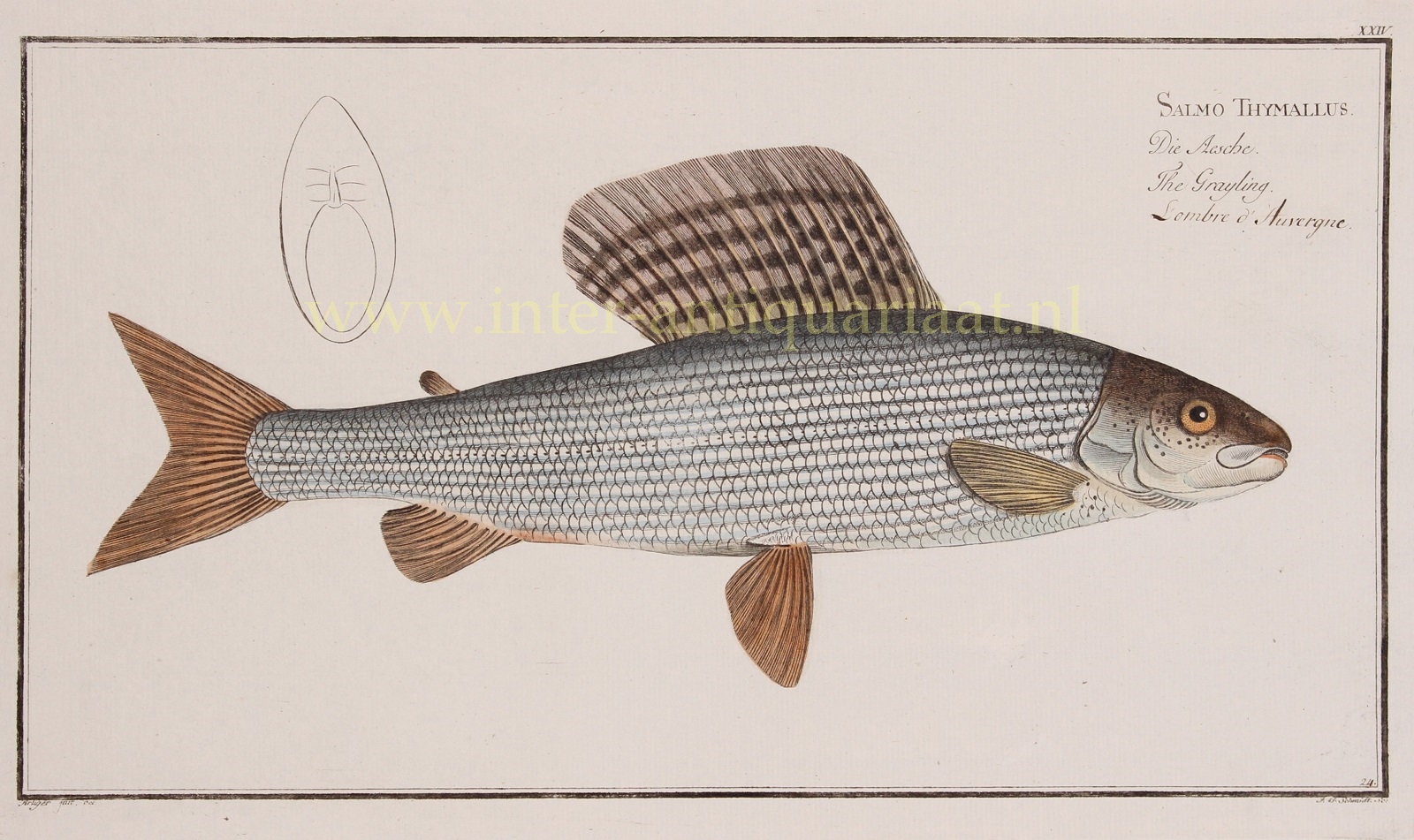Grayling (fish) – Markus Elieser Bloch, 1782-1795
€350
THE GRAYLING
“Salmo Thymallus/Die Aesche/The Grayling/Lombre d’Auvergne” (plate 24), copper engraving made by Ludwig Schmidt after the drawing of Krüger jr, for Markus Elieser Bloch’s “Allgemeine Naturgeschichte der Fische” published in Berlin between 1782 and 1795. With original hand colouring. Size: 19 x 38 cm.
Bloch’s work on the “Allgemeine Naturgeschichte der Fische” occupied a considerable portion of his life, and is considered to have laid the foundations of the science of ichthyology. The publication was encouraged by a large subscription, and it passed rapidly through five editions in German and in French. Bloch made little or no alteration in the systematic arrangement of Peter Artedi and Carl Linnaeus, although he was disposed to introduce into the classification some modifications depending on the structure of the gills. To the number of genera before established, he found it necessary to add nineteen new ones, and he described 276 species new to science, many of them inhabitants of the remotest parts of the ocean, and by the brilliancy of their colours, or the singularity of their forms, as much objects of popular admiration as of scientific curiosity.
Bloch is considered the most important ichthyologist of the 18th century.
Grayling is a species of freshwater fish that belongs to the salmon family, Salmonidae. It is native to the northern hemisphere, and can be found in streams, rivers, and lakes in Europe, Asia, and North America. The grayling is a predatory fish that feeds on insects, crustaceans, and small fish. It has a slender, cylindrical body shape, with a large dorsal fin and a distinctive, sail-like dorsal fin that is often used to distinguish it from other species of fish. The grayling is highly valued by anglers for its fighting spirit and acrobatic jumps when hooked, making it a popular sport fish. In addition to being a popular game fish, the grayling is also considered a valuable food fish, with its meat having a delicate flavor and texture.
Price: Euro 350,-


